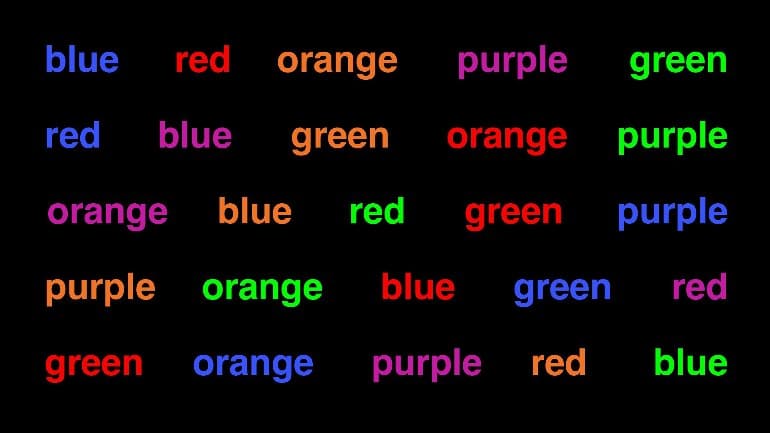Summary: Researchers have developed a simple behavioral test to measure an individual’s risk of developing Alzheimer’s disease before symptoms appear.
Source: CalTech
Alzheimer’s disease is a neurodegenerative condition that damages a person’s ability to think, remember, and perform basic functions.
According to the National Institutes of Health, Alzheimer’s affects more than 6 million Americans, mostly ages 65 and older. Though the neurological damage from the disease is irreversible, early detection and intervention has been shown to slow its progression.
Before the onset of Alzheimer’s physical symptoms, the most commonly used method to measure an individual’s risk of developing the disease is through measuring levels of certain proteins, such as amyloid beta and tau proteins, in spinal fluid. This test is invasive, painful, and expensive.
Now, a team from Caltech and the Huntington Medical Research Institutes has made progress toward developing a simple behavioral test to measure an individual’s risk of developing Alzheimer’s before any symptoms arise.
A paper describing the team’s findings appears in the journal Alzheimer’s & Dementia: Diagnosis, Assessment & Disease Monitoring on September 20.
The research was conducted in the laboratory of Shinsuke Shimojo, Gertrude Baltimore Professor of Experimental Psychology. Shimojo is an affiliated faculty member with the Tianqiao and Chrissy Chen Institute for Neuroscience at Caltech.
“Early detection of Alzheimer’s disease is important in order to take interventions that can slow the progression of the disease,” says the study’s first author Shao-Min Sean Hung, formerly a postdoctoral scholar in the Shimojo laboratory and now an assistant professor at Waseda University in Japan.
“Before the onset of the disease, by definition, cognitively healthy people do not have behavioral symptoms—and thus it’s not possible to do traditional behavioral assessments for the disease because there are no behavioral symptoms yet.
“What we’re trying to do is develop a test to detect behavioral abnormalities long before any onset of symptoms and in a less invasive way than measuring spinal fluid.”
The study involved 40 people with an average age of 75 and all cognitively healthy, who underwent myriad tests related to Alzheimer’s risk: magnetic resonance imaging (MRI) of the brain, genome sequencing, and the aforementioned invasive spinal fluid measurements.
From these biological markers, individuals could be categorized as high risk or low risk. The researchers aimed to develop a behavioral test whose results would correlate with these biological measurements.
The team developed a task in which a participant undergoes a so-called Stroop Paradigm test. In this common test, a person is shown a word—the name of a color—displayed in colored ink. However, the word itself does not necessarily match the color of the printed word—for example, the word “RED” is printed in the color green.
In each iteration of the task, the participant is asked to name either the color of the word or the word itself. Compared to naming the word itself, naming the color of the text is considered “high effort”—it is more challenging than it might seem.
In this study, the researchers also added a hidden element to the Stroop Paradigm. Right before the actual target is shown, a colorless word is flashed rapidly on the screen—so rapidly that a participant cannot detect it consciously.
The colorless word is intended to unconsciously distract the participant and measure “implicit cognition.” In addition to conscious and intentional information gathering or “explicit cognition,” our brains have a separate system in which sensory information is digested without conscious awareness—this is known as implicit cognition.
“The participants in our study are cognitively healthy at the explicit level, and we measure this through a battery of neuropsychological tests,” says Hung.

“But this study’s central question is: How about their implicit cognition? Could it be possible that their implicit cognition is more sensitive to show Alzheimer’s-related cognitive decline? The study tested the hypothesis that high-risk and low-risk cognitive healthy participants would be distracted by an unseen word differently.”
The study was double-blinded, so neither the participants nor the researchers knew anything about the participants’ biological data prior to the data analysis.
The test showed that the individuals with high-risk biological factors slowed down by about 4 percent on the Stroop test when an unconscious and inconsistent word was flashed.
This suggests, Hung says, that the conditions that lead to Alzheimer’s may affect implicit cognition far before conscious cognition, and thus a test to measure implicit cognitive performance may be able to detect a high risk of developing Alzheimer’s disease without the need for invasive physical measurements.
The researchers emphasize that this test is not diagnostic yet—that is, this particular test cannot measure an individual’s risk for Alzheimer’s, but simply shows a correlation between the group of high-risk individuals and worse performance on the test when an unconscious distracting word is present.
The next steps are to combine the test with other noninvasive physical measurements, such as heart rate and other neurophysiological markers, with the goal of making it more predictive.
Additional Caltech co-authors are Shimojo and senior scientist Daw-An Wu, Ph.D. Professor Xianghong Arakaki of the Huntington Medical Research Institutes is an additional co-corresponding author.
About this Alzheimer’s disease research news
Author: Lori Dajose
Source: CalTech
Contact: Lori Dajose – CalTech
Image: The image is credited to CalTech
Original Research: Open access.
“Stronger implicit interference in cognitively healthy older participants with higher risk of Alzheimer’s disease” by Shao‐Min Hung et al. Alzheimer’s & Dementia: Diagnosis, Assessment & Disease Monitoring
Abstract
Stronger implicit interference in cognitively healthy older participants with higher risk of Alzheimer’s disease
Introduction
Abnormal cerebrospinal fluid amyloid beta (Aβ)42 and tau levels have been revealed decades before symptoms onset in Alzheimer’s disease (AD); however, the examination is usually invasive and inaccessible to most people. We thus aimed to develop a non-invasive behavioral test that targets early potential cognitive changes to gauge cognitive decline. Specifically, we hypothesized that older cognitive healthy participants would exhibit comparable performance when the task was explicit and relied on conscious cognition. However, when the task was implicit, the performance of participants at high and low risks for AD would bifurcate. That is, early changes in unconscious cognition could be linked to cognitive health.
Methods
We measured implicit interference elicited by an imperceptible distractor in cognitively healthy elderly participants with normal (low risk) and pathological (high risk) Aβ42/total tau ratio. Participants were required to perform a Stroop task (word-naming or color-naming on an ink-semantics inconsistent word) with a visually masked distractor presented prior to the target task.
Results
We found that, under a high-effort task (i.e., color-naming in the Stroop task), high-risk participants suffered interference when the imperceptible distractor and the subsequent target were incongruent in the responses they triggered. Their reaction times were slowed down by approximately 4%. This implicit interference was not found in the low-risk participants.
Discussion
These findings indicate that weakened inhibition of distracting implicit information can be a potential behavioral biomarker of early identification of AD pathology. Our study thus offers a new experimental paradigm to reveal early pathological aging by assessing how individuals respond to subperceptual threshold visual stimuli.






